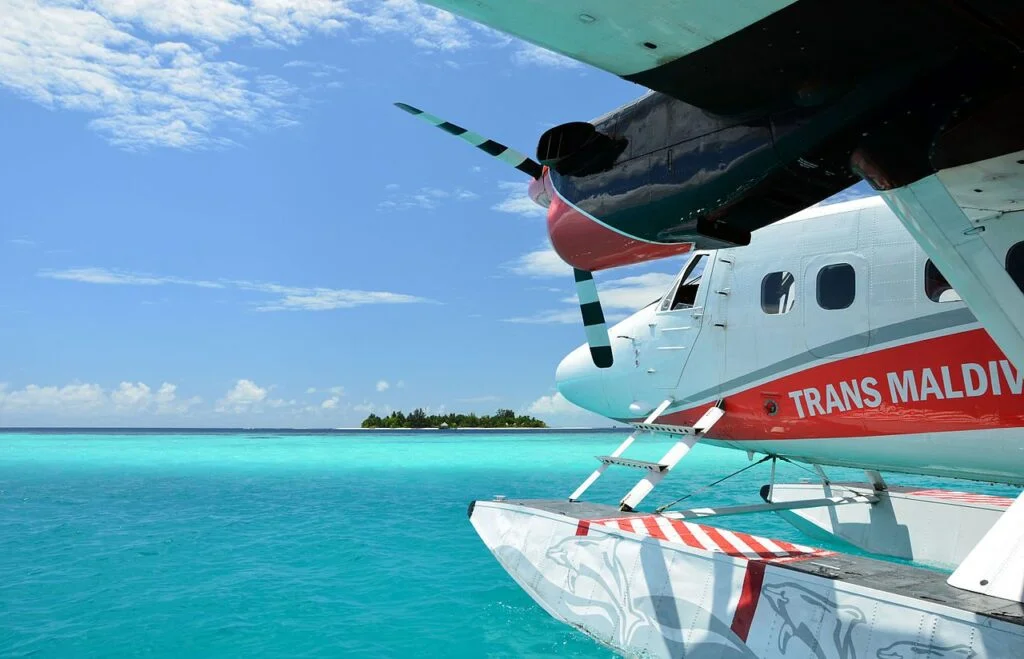
Aviation is a key sector in the global economy, but its environmental impacts are often overlooked. Flying might seem like a harmless way to get around, but did you know that aviation is one of the fastest-growing sources of greenhouse gas emissions? But until we have fossil-free flight, there are options to mitigate one of our greatest conveniences – Flight!
The environmental impacts of the aviation industry are obviously numerous and significant. Flying is a concern for many people because it consumes a lot of fuel, produces greenhouse gases, and does not have the best environmental record. If you’re considering traveling by plane, it’s essential to know the facts about the environmental impact of your travel before you take off into the sky.
You contribute to environmental problems like climate change, air pollution, and noise pollution when you fly. The emissions from aircraft account for about two percent of global carbon dioxide emissions. That number is going to increase as air travel gets back to normal. In addition to CO2, airplane engines also produce nitrogen oxides, sulfur oxides, and water vapor. All of these elements can cause health problems and damage the environment.
In terms of climate impact, aviation is a particularly thorny issue. Although airplane emissions account for only a tiny percentage of global greenhouse gas emissions, they are snowballing. And because emissions from aircraft travel high into the atmosphere, they have a disproportionately large climate impact.
- How does the Aviation Industry affect Climate Change?
- How much does air travel contribute to pollution?
- Why is air travel so bad for the environment?
- Do airplanes cause the most pollution?
- Is flying worse for the environment than driving?
- How bad is travel for Global Warming?
- How does tourism lead to climate change?
- How will climate change affect travel?
- How to reduce air travel emissions?
- 1. Invest in fuel-efficient aircraft technologies
- 2. Use more sustainable fuels
- 3. Reduce the weight of luggage
- 4. Encourage passengers to travel light
- 5. Choose destinations with low environmental impact
- 6. Take public transportation Modes
- 7. Carpool
- 8. Compile your trip in an eco-friendly way
- 9. Direct flights
- 10. Walk or bike short distances
- 11. Carbon Offsets
- 12. Travel Less
- In conclusion to, carbon dioxide emissions
- Flight FAQ’s
- What is the International Civil Aviation Organization doing to combat global warming?
- Does flying emit more CO2 than driving?
- What can I do to reduce my personal carbon footprint?
- What are the types of carbon emissions?
- What is the airline industry doing to reduce air pollution?
- What is climate science?
- What is the difference in my carbon emissions if I live in a smaller or bigger city?
- How does business class travel affect climate?
- What is climate action & the substantial development goal 13?
How does the Aviation Industry affect Climate Change?
Traveling affects climate change in several ways. Aviation is currently responsible for about 2.1% of global greenhouse gas emissions. The emissions from a single round-trip flight between New York and London are equal to the average annual emissions of an American car.
In addition to the carbon dioxide emitted by aircraft, there is also water vapor and cirrus clouds, which can significantly impact the climate. Contrails, or lines of condensation left behind aircraft engines, can form into long-lasting, high-altitude clouds that trap heat and contribute to climate emergencies.
How much does air travel contribute to pollution?
Air travel contributes more to pollution than any other form of transportation. The aviation industry is responsible for about 12% of global transportation emissions compared to 74% of road transportation. But, aviation’s share is growing as air travel becomes more popular. The pollution caused by air travel is so much so that it exceeds the pollution of the global construction industry.
Air travel has been the most booming industry in recent years. As a result, the impact on the environment has also been substantial. Not only does air traffic produce greenhouse emissions, but it also creates noise pollution. It contributes to the depletion of the ozone layer.
Why is air travel so bad for the environment?
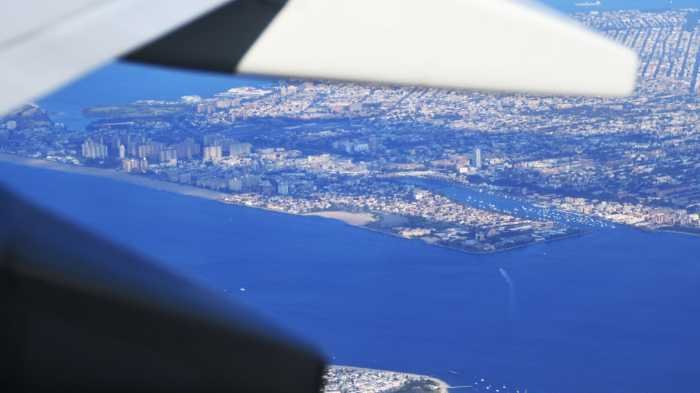
There are a number of reasons why air travel is so bad for the environment. For instance, airplanes produce a lot of emissions, which contribute to the climate crisis. In addition, planes use a lot of fuel, and that fuel releases pollutants into the atmosphere. Moreover, airplanes also generate a lot of noise pollution, harming both people and wildlife.
Your airplane emits greenhouse gases like carbon dioxide (CO2), nitrous oxide, and methane when you fly. These gases contribute to climate breakdown, the gradual warming of Earth’s atmosphere. While airplane emissions account for only about eight percent of global emissions, they grow much faster than any other sector.
Do airplanes cause the most pollution?
When we look at other modes of transportation and industries, airplanes are often thought to be the biggest emitters of pollutants into the environment. This is particularly true for greenhouse emissions, which are believed to contribute significantly to climate emergency.
However, there is still some debate over how much carbon pollution airplanes produce. For example, planes travel many further distances and carry more passengers and cargo than cars and trucks. This means they have a much more significant environmental impact on emissions per passenger or mile traveled.
Despite this, airplanes still produce less than 3% of global greenhouse gas emissions. Many experts believe that their contribution to the climate crisis is overstated. In addition, airplane manufacturers are working on new technologies that will reduce the environmental impact of flying (vs. the impact of meat consumption) in the future.
Ultimately, the environmental impacts of the aviation sector will continue to be a topic of debate. However, it is clear that airplanes significantly affect our planet. We need to continue to find ways to reduce this impact.
Is flying worse for the environment than driving?
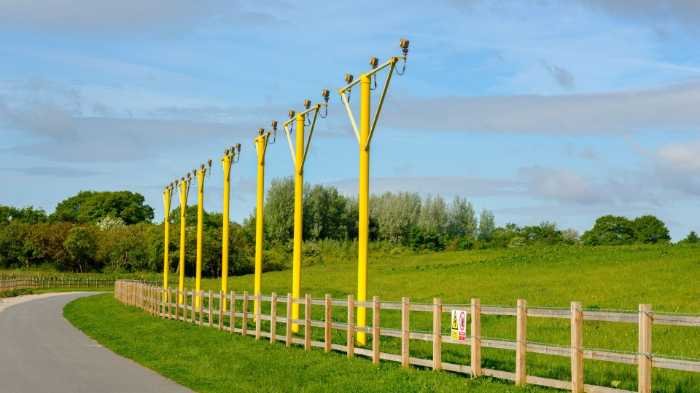
This question has been hotly debated for many years, with no definitive answer. Some people say that flying is much worse for the environment than driving, while others claim that the two are equal. The truth is that there are many factors to consider when assessing the environmental impacts of airline emissions and driving, so it’s challenging to make a definitive statement.
However, one clear thing is that flying has a much more significant impact on the environment than driving when you take into account the entire life cycle of each mode of transportation. This includes everything from the production of the vehicle or aircraft to how it’s used and disposed of at the end of its life.
Airplanes consume more fuel per passenger mile than cars, producing more carbon emissions. But, if we look at the numbers, air travel contributes only 2% of global greenhouse gas emissions. In comparison, road transportation stands at about 10%. So, while flying is not the most significant contributor to the climate crisis, it is still a significant one.
How bad is travel for Global Warming?
When we travel, we use fossil fuels like gasoline and diesel to power our vehicles or to generate electricity. Fossil fuels release a carbon footprint into the atmosphere, contributing to global heating.
Car travel is the most significant contributor to global emissions. Cars and other vehicles account for about one-fifth of all greenhouse gas emissions in the United States. The average American household owns two cars, and each vehicle emits about five metric tons of CO2 per year.
Commercial aircraft emissions are also a significant contributor to global heating. A single round-trip flight from New York to Singapore releases about three tons of CO2 into the atmosphere. That’s about the same as the average American’s annual emissions from driving.
How does tourism lead to climate change?

Tourism is one of the world’s largest and fastest-growing industries. It has been estimated that by 2023, international tourism spending will reach $15 billion. While this growth benefits local communities and economies, it also hurts the environment.
One of the main ways tourism contributes to climate emergencies is through carbon emissions from transport. International Aviation is a particularly high-emitting sector, with aircraft emissions from international flights projected to grow by 3–4% per year over the next two decades.
The growth in global power is placing unprecedented strain on the world’s natural resources. There is a risk that the very things that make destinations attractive to tourists – their unique landscapes, cultures, and biodiversity – will be lost due to overdevelopment.
The climate crisis is already making it harder for many people to earn a living from tourism. For example, in the Maldives, sea-level rise is threatening the existence of the country’s beaches, which are a significant tourist attraction.
Tourism must be managed in a way that minimizes its environmental impact. This means investing in clean energy technologies and using more innovative transport systems. It also means building resorts and hotels that are more energy-efficient.
Ultimately, we need to change the way we travel. We need to switch to low-carbon modes of transport like electric trains and buses and choose destinations with low environmental impact. If we don’t take action now, the climate crisis will damage the tourism industry and cost jobs.
How will climate change affect travel?
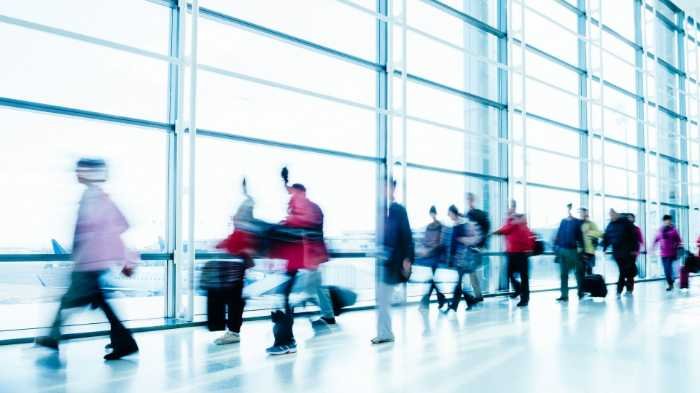
Climate change will affect travel in many ways. One of the most noticeable effects will be on air travel. As the Earth warms, the atmosphere will hold more water vapor. This will lead to more powerful storms and more extreme weather conditions. As a result, airports will need to make expensive upgrades to their infrastructure to deal with the increased risk of damage from storms. Airlines will also need to re-route flights to avoid dangerous weather conditions, leading to longer travel times and higher fares.
Another effect of climate change that will impact travel is rising sea levels. This will cause coastal areas to flood, making them unavailable for tourism or development. As a result, many popular beach destinations will become off-limits. In addition, the increased intensity of storms and floods will damage infrastructure and make travel dangerous.
Finally, climate emergency will indirectly affect travel by causing economic instability. As the climate changes, different parts of the world will become more or less hospitable to specific agriculture and tourism. This will lead to shifts in economic activity, which could cause problems for the travel industry as a whole.
How to reduce air travel emissions?
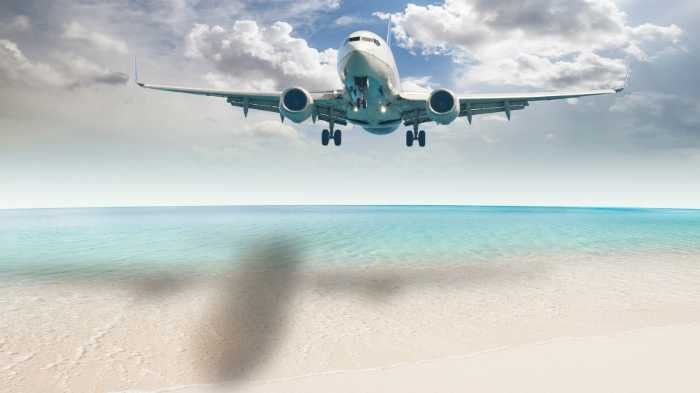
There are a number of ways to reduce the environmental impact of your travel. By following these tips, you can help to make air travel more sustainable and reduce carbon emissions.
1. Invest in fuel-efficient aircraft technologies
The airline industry is investing in new technologies that will reduce the amount of jet fuel they use. This includes more efficient engines, lighter aircraft materials, and optimized flight paths. These additions will help to reduce aviation’s (US contributions) contribution to climate change.
2. Use more sustainable fuels
Another way of reducing emissions is by using more sustainable fuels. Biofuels, for example, are made from plant matter and can be used to power aircraft. Biofuels for the aviation industry can be made from a variety of crops, including jatropha, camelina, waste oils, allows, palm oil, and algae. While biofuels or other alternative fuels are not a silver bullet, they do have the potential to reduce emissions from the aviation sector.
3. Reduce the weight of luggage
Airlines are also looking at ways to reduce the weight of luggage. This will not only save on fuel costs but will also help to lower emissions. Some airlines are now charging passengers for checking in luggage. Most airlines have also reduced the weight allowed for carrying bags. They charge for every extra kg to discourage passengers from overloading planes.
4. Encourage passengers to travel light
Airlines are also encouraging passengers to travel light. This means packing essential items in a carry-on bag and avoiding checked luggage. Not only does this save on fuel costs, but it also means that passengers are not waiting for their bags to come off the plane. Lesser weight means less wear and tear on the aircraft, which keeps planes more efficient and reduces their carbon footprint.
5. Choose destinations with low environmental impact
Another way to reduce the environmental impact of travel is by choosing destinations with a low environmental impact. Some destinations, such as Costa Rica, Uruguay, Rwanda, Portugal, Slovenia, Finland, and the Channel Islands, have committed to sustainable tourism. This means that they work to minimize the negative environmental impact of tourism and encourage visitors to enjoy their natural surroundings.
Many websites and apps can help you find these destinations. For example, the Ecotourism Society has a list of sustainable tourism operators. WWF also has a list of sustainable travel tips. Following these tips, you can play your part in reducing the climate impacts of your travel.
6. Take public transportation Modes
When possible, take other transportation modes instead of air traffic. This not only reduces aviation emissions by a margin, but it also saves money. For long-distance trips, consider taking the train or bus. If traveling within a city, use the subway or light rail. In public transportation, select the electric vehicle over the petrol-driven one where available.
7. Carpool
Another way to reduce your emissions when traveling is to carpool with others. This not only cuts down on the number of cars on the road, but it also allows passengers to share the cost of the trip. Some websites and apps can help you find people to carpool with.
8. Compile your trip in an eco-friendly way
Another way to make your travel more environmentally friendly is by compiling your trip in an eco-friendly way. This means avoiding long-haul flights, choosing hotels and activities with low environmental impact, and using sustainable modes of transportation when possible.
9. Direct flights
When possible, fly directly. This reduces the number of takeoffs and landings, saving fuel and carbon emissions.
10. Walk or bike short distances
If the distance between your hotel and the activity you want to do is short, consider walking or biking. Not only does this help to reduce emissions, but it’s also a great way to see the local area. Moreover, biking or cycling is also good for your health.
11. Carbon Offsets
You can also offset the carbon footprint from your flight by donating to a carbon-offsetting organization. Airlines can also buy carbon credits to offset the emissions from their flights.
12. Travel Less
Another way to lessen emissions is to encourage passengers to reduce flying. Airlines can do this by charging more for tickets on high-emitting flights or providing incentives for passengers to fly less. For example, they could offer a discount on tickets for flights that have lower emissions.
With the growing global population, it’s essential to reduce our travel, especially by car and airplane. These are the two transportation modes with the highest emissions.
In conclusion to, carbon dioxide emissions
Regardless of what steps you take, flying will always significantly impact the environment. However, by being aware of the dangers and taking some simple precautions, you can minimize that impact. Keep in mind that there are a number of ways to reduce the environmental impacts of your travel, including choosing destinations with low ecological impact or reducing your emissions through carpooling or public transportation. So, next time you’re planning a trip, think about how you can make your travel more sustainable.

Flight FAQ’s
What is the International Civil Aviation Organization doing to combat global warming?
The International Civil Aviation Organization (ICAO) is a UN agency responsible for setting global aviation standards. In 2016, ICAO agreed to develop a plan to reduce aviation emissions by 50% by 2050.
Does flying emit more CO2 than driving?
Yes, flying emits significantly more CO2 than driving. A single long-haul flight can produce more emissions than an entire year of driving.
What can I do to reduce my personal carbon footprint?
You can do many things to reduce carbon footprints, including flying less, driving less, and conserving energy. You can also buy carbon offsets to neutralize the emissions from your commercial flights.
What are the types of carbon emissions?
There are three types of Carbon footprints: carbon dioxide, land use, and indirect emissions. CO2 is the most common type, accounting for 95% of airline industry emissions. Land use and indirect emissions include the CO2 released from deforestation and other activities that impact land use and the CO2 released from fuel production.
What is the airline industry doing to reduce air pollution?
The airline industry is taking many steps to reduce CO2 emissions, including investing in renewable energy projects and more efficient planes. The industry is also working for better air traffic control and more efficient airport operations.
Seaplanes like Harbour Air are another initiative towards providing a carbon-neutral journey.
What is climate science?
It is studying the climate system and how it changes over time. It includes the study of Earth’s atmosphere, oceans, land surfaces, ice sheets, and biosphere. It also consists of studying the sun’s influence on the climate and Earth’s response to natural and human-induced environmental changes.
What is the difference in my carbon emissions if I live in a smaller or bigger city?
You have a smaller carbon footprint if you live in a smaller town and use public transport or ride a bicycle. In comparison, if you live in a big city and drive your car, you have a disproportionately large carbon footprint. Air traffic can also play its role unless the airline you use offers emissions trading has jet engines with fuel efficiency, and a reasonable carbon budget.
How does business class travel affect climate?
It is estimated that business class travel emits 50% more carbon than economy class. There are fewer people in business class, so the plane uses more fuel per person. Additionally, business passengers often take advantage of extra services, such as checked baggage and in-flight meals, increasing emissions.
What is climate action & the substantial development goal 13?
In 2015, 197 countries adopted the United Nations’ Sustainable Development Goals (SDGs), a blueprint to end poverty, fight inequality and climate change, and protect our planet. SDG 13 calls for urgent climate action to combat the impacts of global heating.

Dean Emerick is a curator on sustainability issues with ESG The Report, an online resource for SMEs and Investment professionals focusing on ESG principles. Their primary goal is to help middle-market companies automate Impact Reporting with ESG Software. Leveraging the power of AI, machine learning, and AWS to transition to a sustainable business model. Serving clients in the United States, Canada, UK, Europe, and the global community. If you want to get started, don’t forget to Get the Checklist! ✅
